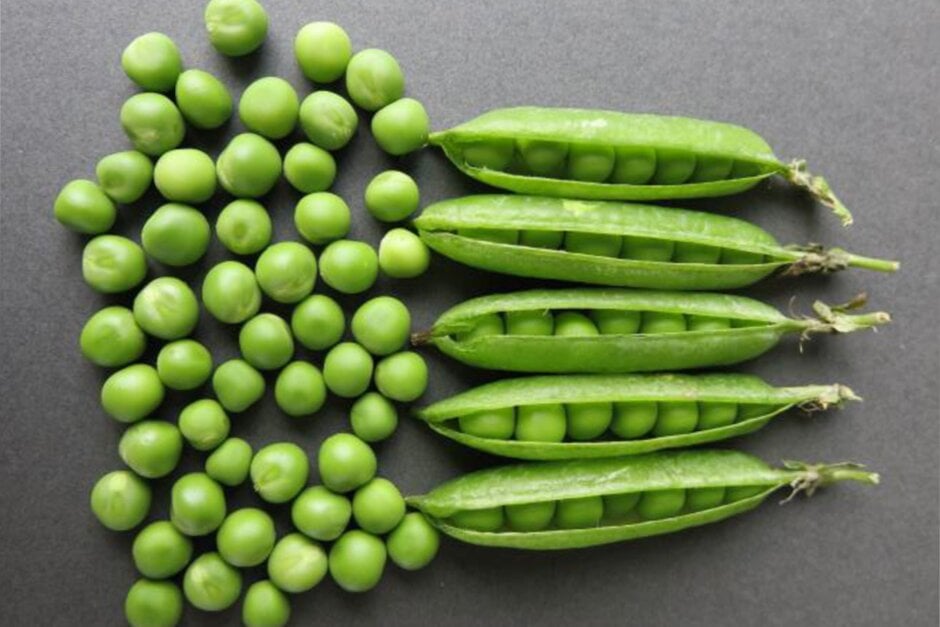Pisum sativum 'Terrain'PBR
pea 'Terrain'
A climbing annual, with rather bluish-green foliage with rounded leaflets, often marbled with grey-silver, each leaf ending in a clinging tendril to help the plant climb. White flowers in spring and summer are followed by green pods. This shelling variety produces a heavy crop of sweet peas

Size
Ultimate height
0.5–1 metresTime to ultimate height
1 yearUltimate spread
0.1–0.5 metresGrowing conditions
Moisture
Moist but well–drainedpH
Acid, Alkaline, NeutralColour & scent
| Stem | Flower | Foliage | Fruit | |
| Spring | White | Green Grey Silver | ||
|---|---|---|---|---|
| Summer | White | Green Grey Silver | Green | |
| Autumn | Green Grey Silver | Green | ||
| Winter |
Position
- Full sun
Aspect
South–facing or West–facing
Exposure
Sheltered Hardiness
H2Botanical details
- Family
- Fabaceae
- Native to GB / Ireland
- No
- Foliage
- Deciduous
- Habit
- Climbing
- Genus
A very small genus of annual, flowering plants from legume family. Native to SW Asia and NE Africa, species P. sativum is widely cultivated for food. Hollow. Climbing or trailing stems bear compound leaves and tendrils. Flowers are butterfly-shaped, 1-3 per stalk. The fruit is a pod
- Name status
Accepted
How to grow
Cultivation
Sow seed once the soil is warm in early spring to early summer, in a double row at about 7cm spacings in a flat-bottomed drill 5cm deep and 15cm wide. Choose a position in full sun, with well-drained but humus-rich, moisture-retentive, preferably near-neutral, soil and support with twiggy sticks or netting. Pick pods regularly to ensure a continuous crop; for more advice see Peas (Grow your own)
Propagation
Propagate by seed. See sowing vegetable seeds
Suggested planting locations and garden types
Pruning
No pruning required
Pests
May be susceptible to pea moth, aphids, pea and bean weevil, pea thrips, pigeons, slugs and snails; mice may eat newly sown seeds
Diseases
May be susceptible to foot and root rot, Fusarium wilt, grey moulds, pea leaf and pod spot, and virus diseases. This variety is relatively resistant to powdery mildews and downy mildew
Get involved
The Royal Horticultural Society is the UK’s leading gardening charity. We aim to enrich everyone’s life through plants, and make the UK a greener and more beautiful place.